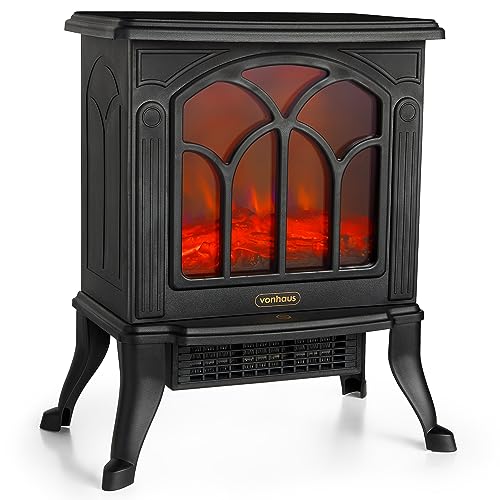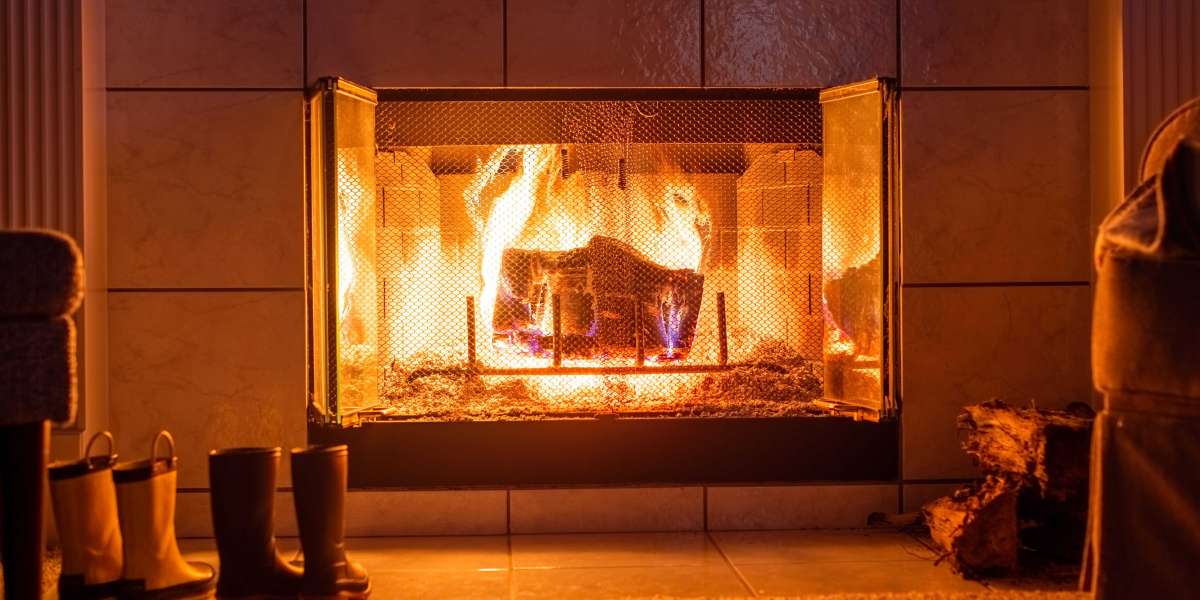 Bio-Ethanol Fireplaces
Bio-Ethanol FireplacesEthanol fireplaces are an impressive alternative to traditional wood burning stoves without the need for a chimney. To use them safely, you will need to take care. First of all, you should not pour additional fuel into the flame while it is burning.
 A complete fire suite such as Mano Mano's Adam Solus Fireplace Suite with Colorado Bio Ethanol Fire in Black PS569 is an easy way to make your space more beautiful.
A complete fire suite such as Mano Mano's Adam Solus Fireplace Suite with Colorado Bio Ethanol Fire in Black PS569 is an easy way to make your space more beautiful.Cost
Ethanol fireplaces are an excellent option to add a cozy and elegant element to your home without the expense associated with wood or gas fireplaces. They have a few distinct advantages over their competitors that are: they don't require an chimney or flue and they aren't expensive to install (except for the cost of constructing the fire surround). They are also portable and can be used both indoors and outdoors. You could even carry them with you when moving house!
Bio-ethanol fireplaces are available in a wide variety of styles, so you can find the perfect one for your space. Some are freestanding while others are wall mounted or insert into an existing stove or fireplace. Some are even remotely controlled! They can be used in outdoor spaces as an outdoor heater. They're a great way to add a bit of warmth to your home, especially during winter.
The price of a fireplace made from bio-ethanol varies according to the model and features you choose. A basic tabletop model may cost between $50 and $100 and a more expensive one can cost upwards of $600. However, the price of fuel is significantly less for an ethanol fireplace than a traditional wood or gas fire.
All ethanol fire places come with a burner which burns the fuel and generates flames. Some have a built-in safety device to prevent overheating and fire hazards, whereas others are operated manually with matches or a lighter. Additionally the bio-ethanol fireplace may be set to extinguish at any moment, while preserving the remainder of the fuel.
The typical cost for a bio-ethanol fireplace is PS300 or less, but you should expect to spend more for a larger and more sophisticated model. The cost can also vary depending on the type of burner and whether it's an automatic or manual burner. The bio-ethanol model that is automated can be more costly than the manual model. However, the added features make it well worth the cost.
Ethanol fireplaces can be an excellent alternative to gas or wood fireplace, but you should consider the cost of installation and the fuel costs before you purchase one. If you're not sure about installing a fireplace, it is possible to engage a professional to do it for you. The cost of installation is significantly lower than installing a standard wood or gas fireplace, and it'll save you money in the long run.
Energy efficiency
In contrast to traditional fireplaces that require a chimney and use fuels like wood, coal or gas fires that produce carbon monoxide and pollution, bio-ethanol fires emit only water vapour and smoke that is odorless. They are therefore safer to use indoors and are a green alternative to other fire alternatives.
In general, bio-ethanol fireplaces tend to be less expensive to run than traditional ones. They are also more efficient in energy use as they consume less energy and producing less heat. They are available in a range of fashionable designs, ranging from traditional open fire designs and stoves to contemporary and ultra-modern bioethanol burners with glass frontages. They can be wall mounted or free standing and are suitable for any room. They can be moved between homes, making them suitable for renovations and new construction, where chimney breasts have been removed.
There are some things to be aware of. You should not add any additional fuel to an existing bioethanol fire still burning. This could cause the fire to spread, and cause ignition of nearby explosive substances. Avoid touching the burner's nozzle or the burner itself while it is in operation.
These fires can also be employed in areas where chimneys are not permitted. Contrary to open and wood-burning fires they don't require a flue or chimney and can be incorporated into existing walls, saving you the expense of building a chimney. They also require less maintenance and you can purchase fake flues that will enhance the look of your home.
A further benefit is that they can be used outside and inside and allow you to enjoy your fireplace all year round. It is recommended to keep your fireplace clear of burning combustibles and keep it away from close to furniture or curtains that could easily catch fire. Also, don't leave a bio-ethanol fireplace unattended or move it while it's in operation.
Bioethanol fuel is a renewable energy source that's made up of yeast, plant sugars and water. It's a greener alternative to fossil fuels like petroleum or coal since it uses modern biochemical processes instead of geological ones. It is also healthier for the environment as it produces more oxygen and has less CO2. Biofuel can be made from organic and non-organic resources, however, it is more common to make use of agricultural waste to produce bioethanol.
Safety
Bioethanol fireplaces provide an eco-friendly and safe alternative to traditional gas and wood fires. They produce real flames but do not emit any particulates or smoke. They emit only water vapour, and small amounts of carbon dioxide. It is the same CO2 absorbed by plants used to make fuel. It is less harmful to the environment.
When using a bio-fireplace, it is essential to adhere to all manufacturer guidelines for safe use and precautions. For instance you should not add fuel to a burning fire unless it has been completely snuffed out. The bio ethanol could splash or spill and cause a fireball, which could ignite nearby flammable objects.
It is also recommended to keep flammable items and children away from the flame, since even a small breeze could send the fuel into flames. Keep the fuel in an area that is safe and out of reach of pets or children. If you have any questions or concerns regarding the product, you should contact the manufacturer.
The Ethanol fireplace is an excellent option to save money and adding warmth to your home, without the hassles of a wood burning stove or chimney. They are simple to operate and can be installed anywhere in your home, including inside or outside. They are available in many different styles and designs. This makes them a great choice for any design.
Many companies provide a full installation service, which means you can have a bio-ethanol fireplace installed quickly and easily. Some companies offer a free consultation to help you select. It is recommended to obtain a quote before making an investment. The cost of a bio-ethanol fireplace can be very different depending on a variety of factors.
The cost of installing a bio-ethanol fire depends on the type you select and the dimensions of your space. Generally you should expect to spend a few hundred dollars for a basic fire and up to several thousand dollars for a more advanced model.
Installation
Ethanol Fireplaces are very popular with homeowners who want to keep their homes warm. They are a great alternative for fireplaces with wood burning. Ethanol is more efficient and produces less ash as compared to fireplaces that burn wood. There are a few factors to consider prior to purchasing.
First, you must consider whether the fireplace you intend to buy is freestanding or built-in. Freestanding bio-ethanol fire places can be moved easily from room to, and some are even suitable for outdoor use. If you decide to install a bio-ethanol fireplace, then you'll have to do it yourself or employ a professional installer. It's worth the effort. A fireplace that is built-in to ethanol will be the focal point of your home and will increase its value.
Some bio-ethanol fire places appear like wood-burning stoves or open fires, while others are more modern. In all cases, they are safe for indoor use as provided you follow the manufacturer's safety instructions. Typically, you should install a bio-ethanol fireplace in rooms that have good airflow. Don't put it near anything flammable.
The bioethanol fires also create stunning flames that are perfect to bring the decor of your home. They are easy to install and do not require a gas supply or flue, making them perfect for modern or traditional homes. Some companies offer zero clearance fireplace inserts, which allow the installation of custom-built ethanol fireplaces that are built in non-combustible surrounds.
The cost of an ethanol fireplace may vary widely based on the dimensions, style and accessories you pick. You will also need to decide if you want an manual or automatic burner. Manual burners require an igniter to light them and may have a sour smell. A digital burner is the opposite, and offers many advantages over a manually operated one. It can save you both time and money.
Another benefit of a bio-ethanol fireplace is that it doesn't require a chimney, which makes them ideal for newer homes. They are also less expensive than wood-burning fires and mains gases. They don't generate the same amount of heat, however they produce less heat than electricity or kiln dried logs, so you shouldn't use them as your primary heating source.



